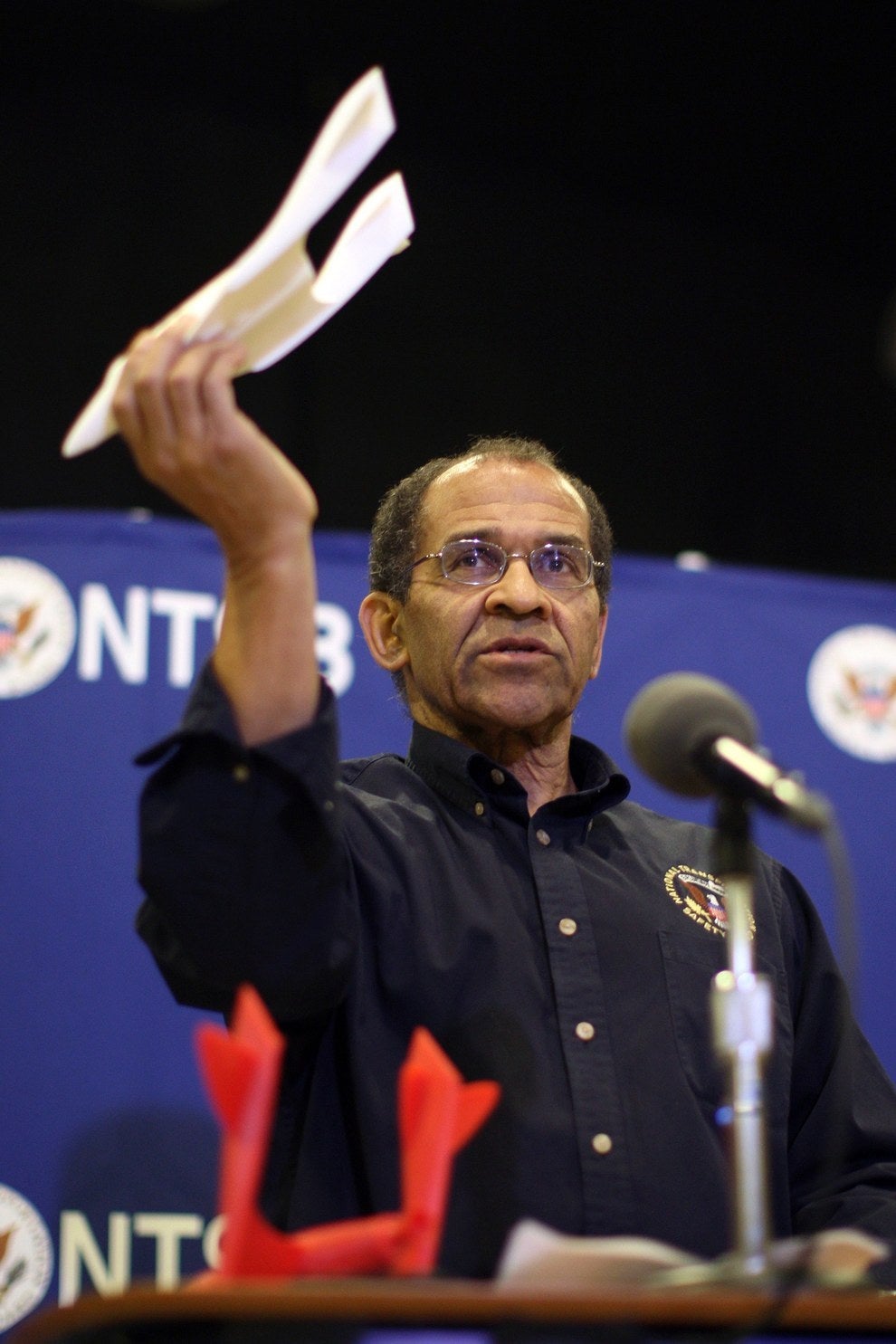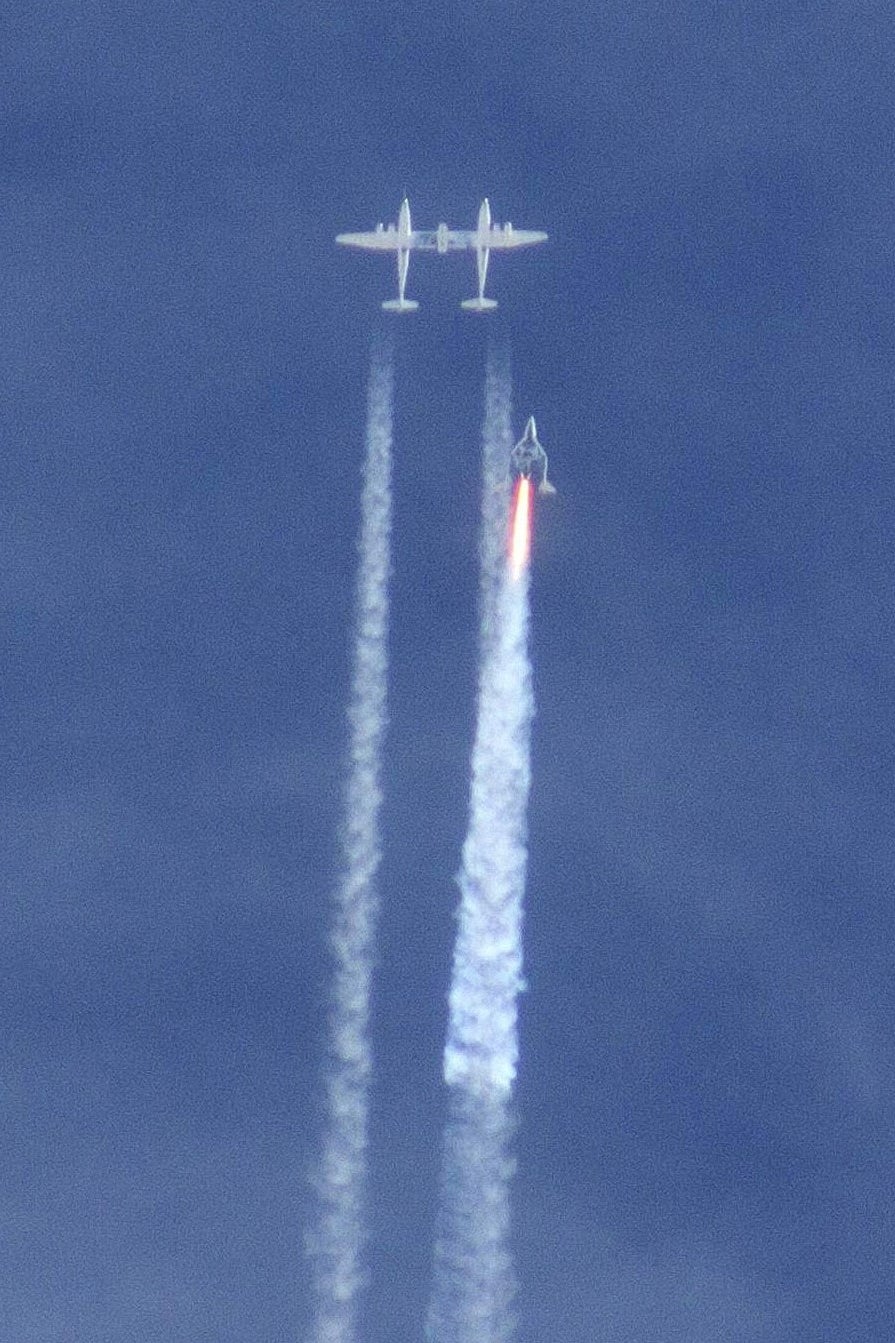Updated — Nov. 4, 12:05 a.m. ET

While the cause of Virgin Galactic's SpaceShipTwo crash has not been determined, National Transportation Safety Board (NTSB) Acting Chairman Christopher Hart said Sunday that a device used to slow the plane down before descent was deployed too soon.
The craft separated normally before descent, but problems occurred when the tail feathers were deployed too early by the co-pilot, who did not survive the crash. Hart said this happened "without being commanded."
"What we know is that after it was unlocked, the feathers moved into the deploy position and two seconds later we saw disintegration," Hart added.
SpaceShipTwo, operated by Virgin Galactic, crashed on Friday in California's Mojave Desert, killing the co-pilot, 39-year-old Michael Tyner Alsbury. The pilot, Peter Siebold, managed to eject from the plane and survived with serious injuries.
Siebold is "alert" and speaking, but has yet to be interviewed by NTSB investigators, CNN reported.


Investigators said Monday that debris from the spaceship were located as far as 35 miles northeast from the original wreckage site, which is five miles large. Hart said it was not clear if the debris originally fell 35 miles away or wind blew it later.
Hart: Some parts of the vehicle have been located as far as 35 miles northeast of the primary wreckage field. #SpaceShipTwo
Virgin's owner, Richard Branson, has said in the past that he hoped to have Virgin Galactic operating next year. His company has sold prospective journeys for $250,000 for each traveler.
Prior to Hart's comments, an engineer who had worked on the shuttle renewed his criticism of Virgin Galactic's use of nitrous oxide fuel on Sunday, AP reported.
Geoff Daly was author of a 2007 report critical of Virgin's claims that nitrous oxide was safe to use in engines for passenger flight.
In a letter written in June 2013, Daly asked the Federal Aviation Administration (FAA) to postpone an experimental flight permit for SpaceShipTwo. Although the FAA said it would look at the issues raised by Daly, no Virgin Galactic flights were halted.
Nitrous oxide is used with fuel to propel the ship. Engineers recently changed from using a rubber-based fuel system to a plastics-based one. The new system had been tested on the ground, but hadn't been used in flight until Friday, AP reported.
In a TV interview with BBC News from his home in the British Virgin Islands on Monday morning, Richard Branson responded to concerns that executives had been warned of safety concerned by engineers, saying: "If any of our rocket engineers said something, that it wasn't safe to go – we wouldn't go. We take safety very seriously. If anyone has said anything, obviously we'd take it seriously, but no one said anything that made us think it wasn't safe to go."
He also slammed "self-appointed experts" for spreading "garbage" in the media surrounding the circumstances of the accident. He referred to reports of the craft exploding in flight, which had since proved to have been wrong.
He emphasized that a lot of the reports he was referring to were in the British media.
Richard Branson giving angry #BBC interview on #VirginGalactic crash about "self appointed experts". On Sunday papers: "It was all garbage"
Branson later went on NBC's Today show:
"Absolutely it's worth the risks." -@RichardBranson talking to @MLauer about Virgin Galactic
"It's a grand program, which has had a horrible setback." -@RichardBranson on Virgin Galactic.
At Virgin Galactic, we are dedicated to opening the space frontier, while keeping safety as our 'North Star'. This has guided every decision we have made over the past decade, and any suggestion to the contrary is categorically untrue.Now is not the time for speculation. Now is the time to focus on all those affected by this tragic accident and to work with the experts at the NTSB, to get to the bottom of what happened on that tragic day, and to learn from it so that we can move forward safely with this important mission.

